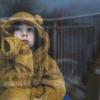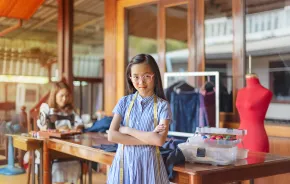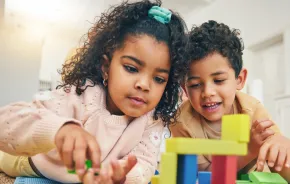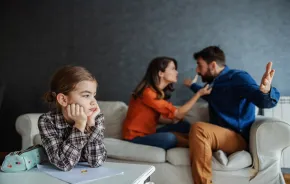 A baby born today will be 34 in 2050. By then, her Seattle won’t look like your Seattle. Her summers will be 80 degrees on average and dry most of the time. She’ll go hiking earlier in the season than her parents did, which almost makes up for the fact that during most winters she won’t be able to go skiing. She’ll avoid the Olympic Sculpture Park (too much flooding), wonder what an oyster tastes like (too much acidification) and see some amazing sunsets (too much smog).
A baby born today will be 34 in 2050. By then, her Seattle won’t look like your Seattle. Her summers will be 80 degrees on average and dry most of the time. She’ll go hiking earlier in the season than her parents did, which almost makes up for the fact that during most winters she won’t be able to go skiing. She’ll avoid the Olympic Sculpture Park (too much flooding), wonder what an oyster tastes like (too much acidification) and see some amazing sunsets (too much smog).
Or maybe not. In a world that’s undoubtedly getting warmer because of humans, predicting anything is still far from easy. But if any one group is qualified to lay odds, it’s climate scientists and activists. They spend years sharing numbers that translate into changes our planet hasn’t seen in millennia. Then, a great many of them go home to toddlers.
So if such people — those arguably on the “front lines” of climate change — are still having kids and populating a fragile planet, what does that mean for the rest of us?
Poking the climate
Parenting takes the long view, but perhaps not as long as climate history. Sarah Myhre, mother of a 3-year-old boy, is an ocean and climate scientist at the University of Washington (UW), where she spends her days studying the past 20,000 years of the earth’s gases, geology and global shifts.
“The things that we think are stable, aren’t,” she says of her work. “When you poke the climate system with a sharp stick, things change really rapidly.”
So rapidly that within her toddler’s lifetime, Myhre expects a much different Pacific Northwest than the one her family has called home for five generations. “The things that I identify with — cold oceans, green trees, mountains filled with snow — those are the things that teach me about who I am. And those things are on the table.”
This likely isn’t news to you; 40 percent of Americans report hearing about climate change in the media at least once a month, and nearly half of us are concerned about what we’re hearing.
The numbers are higher — much higher — for those who have already lived through a climate catastrophe. Take Hurricane Katrina, a storm that cost more than $100 billion and was likely greatly intensified by climate change. More than half of the survivors, many of them single African-American mothers, exhibited PTSD symptoms. Some of them saw no way forward. Following Katrina, suicide attempts among survivors jumped to 79 times the regional average.
When worlds collide
OK — let’s take a deep breath. That is a lot of doom and gloom to take in, and unfortunately, doom and gloom makes us freeze. It’s not our fault. It’s our psychology.
In fact, it’s a state known as “disavowal.” George Marshall, author of Don’t Even Think About It: Why Our Brains Are Wired to Ignore Climate Change, describes disavowal as living in “a state of both knowing and not knowing.”
Anna Fahey knows all about that. She has spent the past decade working professionally to get people to pay attention. It’s not exactly uplifting.
“You have to compartmentalize,” says Fahey, a mother of two who develops climate messaging as director of strategic communication for the sustainability nonprofit Sightline Institute. “Climate change is big and scary, and when you look at your kids every day, it’s just like thinking of car crashes. You can’t look at them and think of that or you’ll drive yourself batty.”
She’s done it once or twice already. One day, Fahey’s then 5-year-old daughter asked what exactly Mommy was working on at home. Fahey’s typical explanations — “Just something for work” or “I’ve got a report to finish” — didn’t satisfy. Her daughter wanted answers.
“I ended up with tears streaming down my face,” Fahey says. “It felt like two worlds colliding: the world of my work and the way I think about solutions for her generation, and the world of her questioning as the real-life person in front of me.”
So how do we survive those colliding worlds? How do we feel anything but impotent about climate change? How do we look at our kids — or even decide to have them — with all this running through our minds? Simple: We talk about it.
“It’s kind of like talking about the monster under the bed,” says Seattle mental health counselor Michael Foster. “Once you talk about the monster under the bed, you’re not so scared. Now you’ve talked about it, and we can do something about it. It makes it less crazy-making.”
Foster started talking in earnest in October 2012 when he began presenting a slideshow about climate change to Seattle-area schools. He has since given presentations to more than 10,000 students. The response, he says, is always positive.
“We feel the most powerful and joyful when we take action on climate,” he says. “We know we’re doing this for someone beside ourselves. It’s about the next generation.”
Suing for their futures
That next generation, by the way, isn’t waiting for a fix. Enter Zoe and Stella Foster, et al. v. Washington Department of Ecology. The state Superior Court case, which involves seven Washington state kids including Foster’s two teenagers, is part a “hatch of cases” filed on Mother’s Day 2011.
Oregon-based nonprofit Our Children’s Trust (OCT) led the coordinated effort to realize a specific legal school of thought: If the legislative and executive branches aren’t doing anything about climate change (or, at least, not quickly enough for it to matter), enact change through the judicial.
To date, OCT has launched 20 cases across the country, including one on the federal level. All aim to create legally binding climate recovery plans, or plans with the goal of reducing carbon dioxide concentrations in order to hit 350 parts per million (ppm) by the end of the century. That 350 is an important number; it’s what the majority of climate scientists say we need to get back to in order to enter “a safe zone.” We’re currently at just over 400 ppm.
For Andrea Rodgers, lead prosecutor on Foster v. Ecology, the OCT cases stand for more than science. They represent common sense.
“As parents, we do our best to set our children up for a successful life,” says Rodgers, the mother of a 5- and an 8-year-old. “I think leaving them a planet where they won’t have global climate catastrophes is not an unreasonable request.”
In May, King County Superior Court Judge Hollis Hill agreed. She ordered the Washington State Department of Ecology to create a rule regulating carbon dioxide emissions by the end of this year and became, Rodgers says, “the first judge in the United States to order an agency to regulate carbon dioxide emissions.”
In her ruling, Judge Hill explained her reasoning: “These children can’t wait, the polar bears can’t wait, the people of Bangladesh can’t wait. I don’t have jurisdiction over their needs in this matter, but I do have jurisdiction in this court.”
Ecology has since begun the court-mandated rulemaking process, which is open to the public. Rodgers encourages parents to send a letter to Ecology environmental planner Sam Wilson or directly to the governor.
“Comments such as ‘You need to make a rule based on science that protects my kid’ is a message Ecology needs to hear,” Rodgers says.
Time, she adds, is of the essence. In 2014, our state needed to reduce emissions by 4 percent per year; because we didn’t, that annual number has jumped to 8 percent. It’s been two years.

Cute little babies
Talking does more than inspire lawsuits.
“It’s important not only for our own mental health, but because what drives social change isn’t [getting] everybody on board,” Fahey of Sightline Institute said in a 2013 speech. “In fact, an intensely committed minority can act as an amazingly powerful lever that shifts the rest of the population.”
She’s right. Science shows that the tipping point for public opinion is a mere 10 percent — a number we already have when it comes to climate change. What we don’t have is the “intensely committed” part of the equation.
But, as one climate scientist put it, “There's nothing like a cute little baby to bring up the emotional side of climate change.” Little League, PTA, Cub Scouts — parents find themselves easily devoted to a cause as long as they think it furthers their kids’ futures.
That’s why Seattle mom Abigail Brockway stood in front of a coal train.
Brockway’s daughter, Sienna, is 14, but when she was younger, she loved going to Carkeek Park. Every time the train rolled through, Brockway would scoop Sienna up and they’d run to the nearby bridge spanning the tracks to feel the vibration rattle them like a roller-coaster.
“Then we started to notice these dark, miles-long, uncovered coal trains,” Brockway says. “We got concerned.”
Concern turned to action when in July 2014, a train carrying crude oil derailed under the Magnolia Bridge. It didn’t explode, but the “what if” alone shocked Brockway. “My daughter’s school was just on the edge of that blast zone,” she says. “It was too close to home.”
Two months later, on Sept. 2, 2014, Brockway and four other members of what became known as the Delta 5 committed what she calls “an act of civil disobedience.” They went to an Everett rail yard and erected a metal tripod in front of a parked train filled with oil from North Dakota and bound for Anacortes. Brockway stood atop the tripod while the other four bound themselves to it. Then, they waited — for eight hours. With them: a petition calling for Gov. Jay Inslee to establish a moratorium against fossil fuel projects in Washington state.
Because of that day, Brockway spent 24 hours in jail, was convicted of misdemeanor trespassing and is on probation for two years. Inslee, meanwhile, did call for the moratorium (in June, following the derailment of an oil train in Oregon).
Of course, you don’t have to stand in front of trains to advocate for change. Parents have more power than they know in shaping how their families talk about and deal with climate change.
“For our children, there are going to be problems that they have to face that we haven’t even realized are problems yet,” says UW assistant professor of oceanography Alex C. Gagnon. So, he says, go back to the basics: “If you can give kids a foundation that makes them feel connected, [makes them] critical thinkers and [makes them] think the world is a place of wonder . . . that seems much more important to me than getting them to fix one particular problem.”
That last part — instilling a sense of wonder — particularly matters to Gagnon, the father of a 2-year-old and a newborn.
“The world is this incredibly beautiful, amazing, complex place,” he says. “Sharing that beauty, that complexity, sharing that wonder fits very naturally with parenting.”
Feel your feelings
Cold oceans, green trees, mountains filled with snow — when Myhre imagines her toddler living without them, a feeling of loss wells up in her chest. It’s a great, sinking sadness typically reserved for other humans or, sometimes, beloved pets. We often dismiss such feelings when they relate to something as vast and — we tell ourselves — inconsequential as nature. But ignoring that grief does us no good.
“Feel your feelings, man,” Myhre says. “Feel your feelings so that you can get to the other side, so that you can burn down the parts of you that need to go in order to rise through this and be stronger.”
Stronger, she says, so we can better raise our children for an unpredictable world, a world where they may not go skiing or eat oysters or know a smog-free skyline, but where what matters most will never change.
“In a future of climate warming, there are a lot of things at risk . . . things that are really scary when you contemplate the kinds of sacrifices that are down the road for us,” Myhre says. “But here’s the thing: In that future, we will still be family. We will still love each other. The things that make life worth living will still be there, and nothing can take that away.”
3 tips from a climate kid
Plaintiff in Foster v. Ecology, president of Plant for the Planet Seattle and 14-year-old Gabe Mandell offers three suggestions to get your family involved:
1. Join a young people’s environmental organization like Plant for the Planet. We’re a group led by children ages 9 and up, supported by families. Look us up on the website Climate Change for Families. We meet the first Friday of every month, and have lots of fun and important activities.
2. Reduce your family’s carbon footprint. This includes things like taking public transportation, biking to school, drying your clothes on a clothesline instead of a dryer and eating less meat. (Tip: Try “Meatless Mondays” to get started.)
3. Take action today to cut Washington state’s carbon emissions. Join other children in writing letters to our legislators and to businesses asking them to help in this effort. Contact Alec Connon (alecconnon@gmail.com) for additional information.











